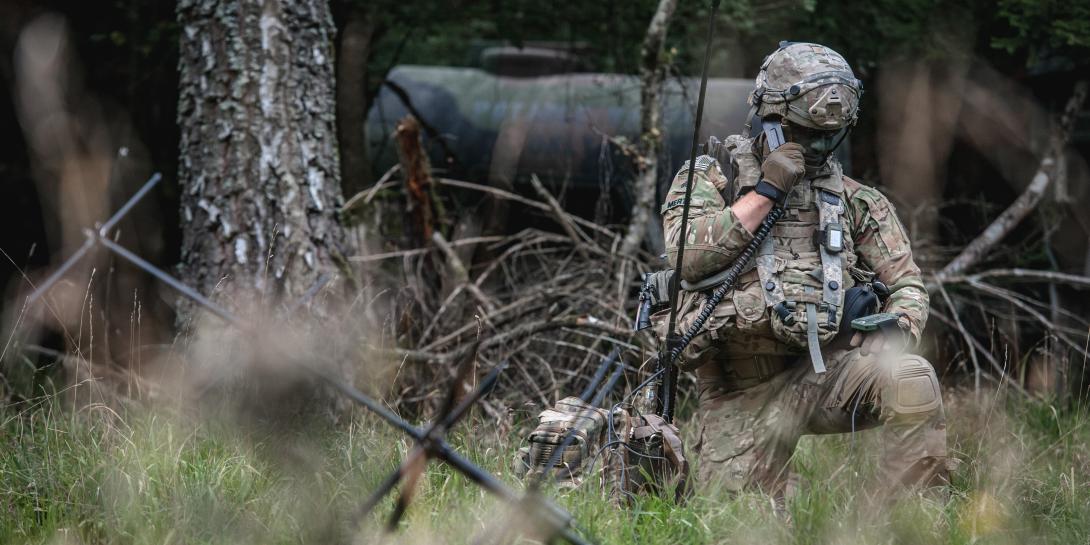Army Tactical Communications Expand Reach but Face Hurdles
U.S Army improvements in networking capabilities are showing significant progress toward goals in the Joint All-Domain Command and Control (JADC2) system, say officers tasked with improving tactical connectivity. Yet along with these gains comes the realization that other challenges must be met to ensure an effectively networked force in the future.
These plusses and minuses were discussed by three Army officers taking part in AFCEA’s TechNet Augusta Virtual Solutions Series on April 20-21. Described as Episode 2, the first day’s events included a network cross-functional team presentation comprising the three officers, two of whom are with the Program Executive Office Command, Control, Communications-Tactical (PEO C3T).
An operational assessment with the 1st Infantry Brigade Combat Team of the 82nd Airborne Division at Fort Polk, Louisiana, highlighted some of the progress along with areas needing improvement.
Col. Robert M. Ryan, USA, chief of operations, Network Cross-Functional Team, emphasized that situational awareness advanced to situational understanding. Alternate and contingency communications worked better and more clearly. This understanding improved decision making markedly, and coalition interoperability with Canadian Forces that were participating improved. On-the-move over-the-horizon communications opened up alternatives for moving forces.
Col. Garth Winterle, USA, project manager for tactical radios, PEO C3T, related that the new mesh networking waveform TSM performed well on both manpack and leader radios, which opens the door to using a tethered drone for establishing radio nodes that can extend range significantly—up to 30 kilometers with the elevated node. A similar test involved placing handheld radios in aircraft, and they could see ground forces in their exact locations up to 20 kilometers away.
But these advantages also illuminated some areas that needed fixing, especially because of the newness of the technologies. Lt. Col. Brandon Baer, USA, product manager, helicopter and multimission radios, PM Tactical Radios, PEOC3T, said that training needs to improve. He pointed out that the operational tempo of the forces translates to fewer touches on the equipment, which becomes a major drawback in combat.
That solution [to convergence] probably sits at the battalion-squad level; we just have to figure out what it is.—Lt. Col. Brandon Baer, USA, product manager, helicopter and multi mission radios, PM Tactical Radios, @PEOC3T #AFCEATechNet
— Bob Ackerman (@rkackerman) April 20, 2021
And the problem doesn’t stop there. Even with training on the equipment, Col. Baer noted, the force needs training on the system of systems. “How does all this stuff work together? How do you get a good signal flow from the individual soldier up to battalion and brigade?” he asked. And, training on the capabilities, largely for the leadership, must be improved.
All these advanced electronics require power, and that increasingly is an issue. Col. Baer noted that battery technology does not move forward as quickly as that of radios and networking devices. He adds that their counterparts at PEO Soldier have done a good job of developing a power concept of operations, but soldiers and their leadership must understand the issue and adjust for it.
Power is another issue that continues to plague us. Technology of power (batteries) does not move as fast as the technology of radios.—Lt. Col. Brandon Baer, USA, product manager, helicopter and multi mission radios, PM Tactical Radios, @PEOC3T #AFCEATechNet
— Bob Ackerman (@rkackerman) April 20, 2021
Then there is cabling. With leader radios and end-user devices such as smartphones, soldiers increasingly will find themselves amid more cables, Col. Baer offered. The Army must ensure that this cabling is less obstructive to soldiers, perhaps through body-fitting constructs. “How do we get it so every time they go through a woods, it doesn’t catch on something and break?” he asked.
Some connections, like commercial USB, are not very robust, so we’re trying to improve that.—Col. Garth Winterle, USA, project manager for tactical radios, @PEOC3T #AFCEATechNet
— Bob Ackerman (@rkackerman) April 20, 2021
Col. Winterle addressed a similar issue. He called for radio vendors to connect their radios to cables and drag them around the woods for about 24 hours straight—“band them into trees.” The problem is connections: “Commercial USB connections are not very robust, and so we’re looking at ways to improve there,” he said.





Comment
Is it possible to know which
Is it possible to know which Canadian Forces entity took part in those tests ? I want to contact them to get a copy of the post exercise report.
Thanks
Comments